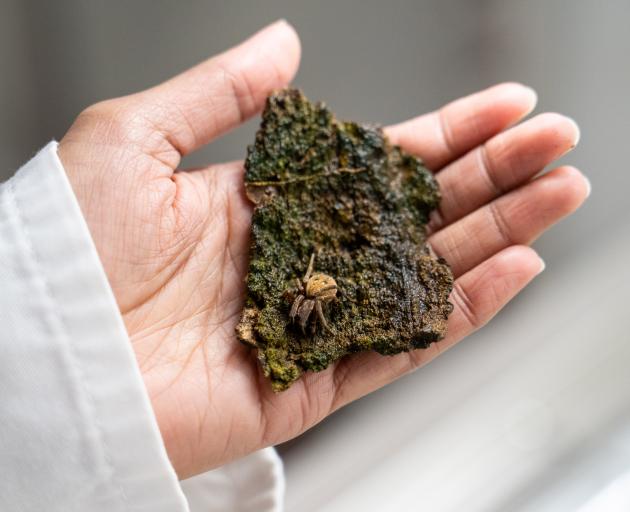Science
New Zealand Researcher Unveils Mysteries of Zombie Spiders

A researcher at Lincoln University in New Zealand is delving into the captivating world of parasitic nematodes that transform spiders into what can only be described as “zombies.” PhD student Usha Mendis is investigating the impact of these parasites, known as mermithids, on various spider species and their broader implications for the ecosystem.
Mendis has identified three distinct types of spiders that carry the mermithids, which also target a range of invertebrates including caddisflies, mayflies, and grasshoppers. The presence of these parasites poses a significant threat to local biodiversity, especially given that over 90% of spiders in New Zealand are endemic. “If something were to happen to them, it would not be good for our biodiversity,” Mendis stated, emphasizing the crucial role spiders play in the food chain.
As the mermithids invade their spider hosts, they induce a slow and gruesome transformation. Infected spiders often exhibit unusual physical changes, such as larger limbs and swollen abdomens. Mendis noted, “They look like zombies,” highlighting the stark visual alterations that occur as the parasite takes control. Unfortunately, the only definitive sign of infection is the eventual death of the spider, followed by the emergence of the nematode.
While the researchers understand how the nematodes exit their hosts, the entry process remains a mystery. Mendis aims to uncover this aspect of the nematode’s life cycle. “They can’t live without a host. They consume the energy and nutrients of the host, and grow inside it,” she explained. The nematodes drive their spider hosts toward moisture, a critical factor for their development.
This moisture-seeking behavior often leads to the drowning of infected spiders. Even if a spider survives the emergence of the nematode, it typically succumbs shortly afterward. To study these parasites more effectively, Mendis is employing water traps to collect the nematodes. This method aims to provide further insights into their lifecycle and interaction with spiders.
The phenomenon of mermithids in New Zealand has only been documented for the past 35 years, and much remains to be learned about their ecological impact. Mendis encourages a shift in public perception regarding spiders. “Spiders may look disruptive and creepy, but they’re not the enemy. They’ve got their own problems to deal with,” she urged, advocating for a greater understanding of their essential role in maintaining ecological balance.
As Mendis continues her research, the intricate relationship between mermithids and spiders serves as a reminder of the complexities within nature and the delicate interconnectedness of all living organisms.
-

 World6 days ago
World6 days agoPrivate Funeral Held for Dean Field and His Three Children
-

 Top Stories1 week ago
Top Stories1 week agoFuneral Planned for Field Siblings After Tragic House Fire
-

 Sports3 months ago
Sports3 months agoNetball New Zealand Stands Down Dame Noeline Taurua for Series
-

 Entertainment3 months ago
Entertainment3 months agoTributes Pour In for Lachlan Rofe, Reality Star, Dead at 47
-

 Entertainment2 months ago
Entertainment2 months agoNew ‘Maverick’ Chaser Joins Beat the Chasers Season Finale
-

 Sports3 months ago
Sports3 months agoSilver Ferns Legend Laura Langman Criticizes Team’s Attitude
-

 Sports4 weeks ago
Sports4 weeks agoEli Katoa Rushed to Hospital After Sideline Incident During Match
-

 Politics2 months ago
Politics2 months agoNetball NZ Calls for Respect Amid Dame Taurua’s Standoff
-

 World2 weeks ago
World2 weeks agoInvestigation Underway in Tragic Sanson House Fire Involving Family
-

 Entertainment3 months ago
Entertainment3 months agoKhloe Kardashian Embraces Innovative Stem Cell Therapy in Mexico
-

 Sports4 weeks ago
Sports4 weeks agoJamie Melham Triumphs Over Husband Ben in Melbourne Cup Victory
-

 World4 months ago
World4 months agoPolice Arrest Multiple Individuals During Funeral for Zain Taikato-Fox



















